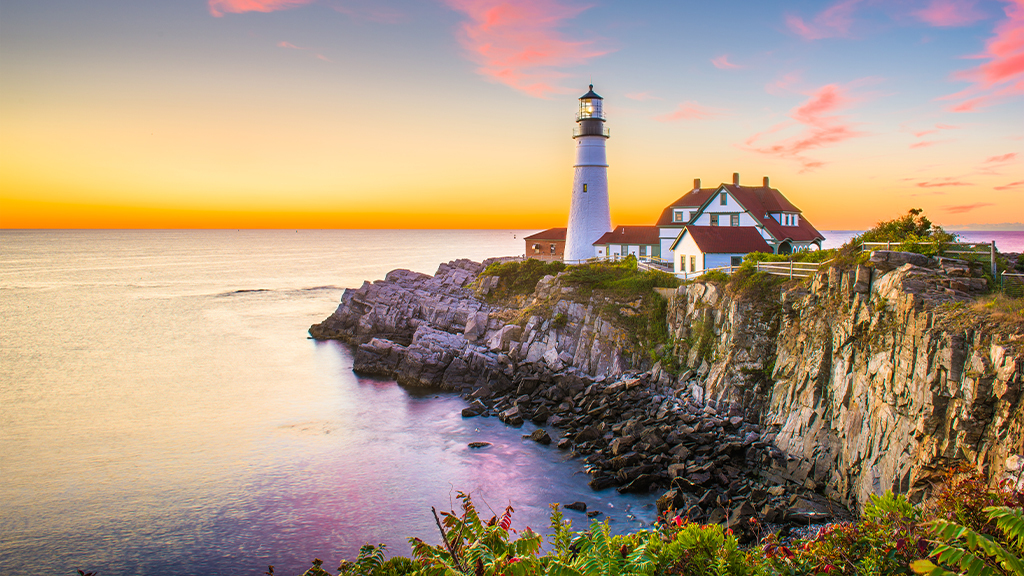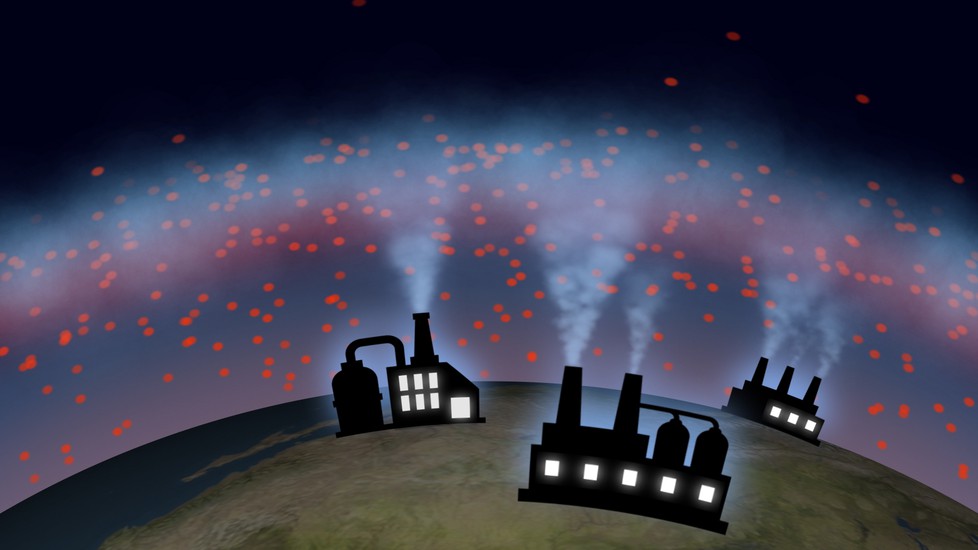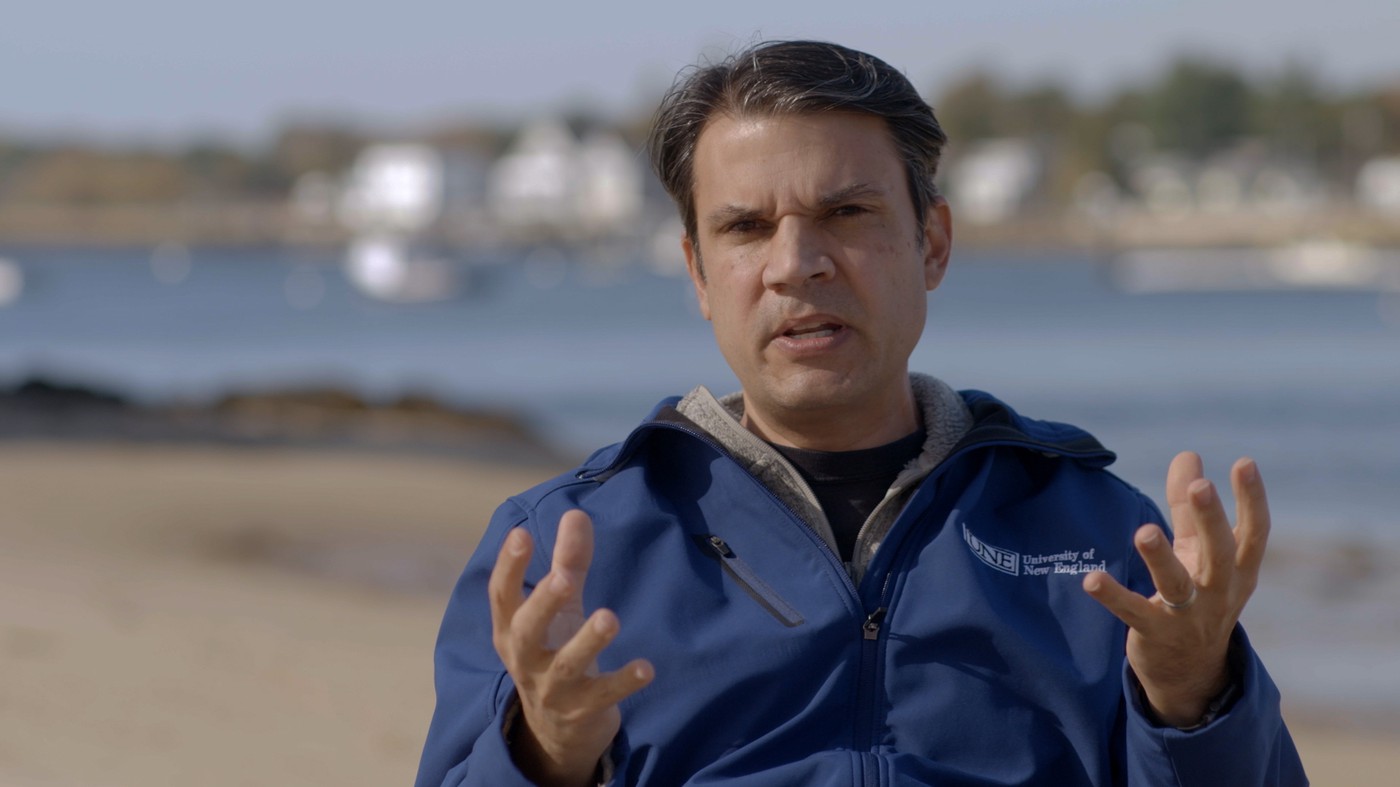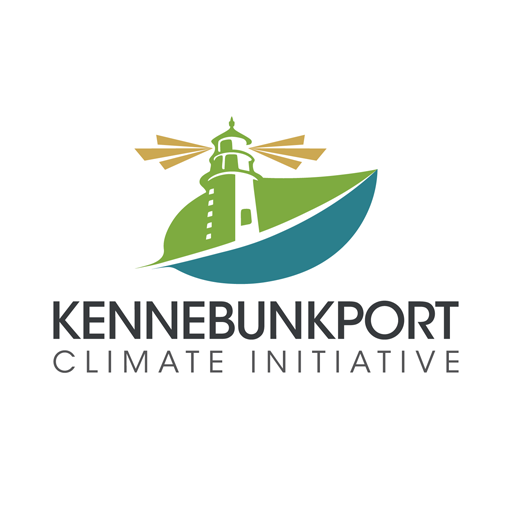Informal Education | Daily Do
Why is something that’s happening out in the ocean such a danger to us on the land?

Chemistry Climate Change Disciplinary Core Ideas Environmental Science Is Lesson Plan Life Science NGSS Phenomena Science and Engineering Practices Three-Dimensional Learning Informal Education
Sensemaking Checklist




Introduction
In this Community Circle discussion, Why is something that’s happening out in the ocean such a danger to us on the land?, families and other communities discuss climate change as observed through the phenomenon of rising sea level. This sensemaking* discussion has four parts:
-
Participants watch the film Our Beautiful Planet Sea Change and then share their noticings and wonderings (questions that arise while watching the film).
-
Participants draw on what they currently know and understand about the ocean - both physical characteristics and the plants and animals living there - and science ideas presented in the movie and try to explain how rising sea level affects us on the land.
-
Participants reflect on the explanations shared and answer the question: Why is something that's happening out in the ocean such a danger to us on the land?
-
Participants shift their thinking from what is happening now to the future and plan how they can work together to decrease human’s negative impact on the environment and slow climate change.
*Sensemaking: Thinking, acting, and talking like scientists to actively try to figure out how the world works.
View the Why is something that's happening out in the ocean such a danger to us on the land? NGSS table to see the elements of the three dimensions targeted in this lesson.
What are Community Circle Discussions?
This activity is called a Community Circle discussion (Community Circles). These types of discussions do not have to physically happen in a community space. Rather, they are intended to facilitate connections for community members around a discussion about science ideas that have the potential to affect everyone. Community Circles are centered around relevant science phenomena and raise common questions children and adults have about the world around them. The goals of Community Circles are to:
-
foster connections in communities through discussions of relevant science ideas,
-
prompt participants to think about what they currently know and understand about a common topic,
-
give participants a place to ask questions about things that interest them, make them curious, and/or cause concern, and
-
discover something new in a way that moves everyone along the learning continuum of a particular science idea.
Like Daily Do’s, these types of activities are considered “micro-learning experiences”. They are not intended to result in individuals being able to generate robust, complete scientific explanations of phenomena. Conversely, they are intended to move thinking along the continuum of learning.
Community Circles are intended to be community-based, family-style discussions and provide ideas, prompts and resources intended to stimulate thinking and move everyone along the continuum of learning. Each Community Circle has these components to them linked below. These components provide fertile ground for authentic, phenomena-driven discussions rooted in science and focused on sensemaking.
Community Circle Guidance
If this is your first Community Circle in the Daily Do series, NSTA recommends reading the guidance before facilitating your first discussion.
Community Circle discussions have four main components. The following guidance will support you in facilitating your discussion.
Introducing the Phenomena & Raising the Question
Our goal is to raise a puzzling question for participants that does three things: (1) prompts them to think about what they currently know, (2) makes them ask what they want to know more about, and (3) helps them discover something new that moves them along the learning continuum.
Tell me what you know....
We want to foster students and other participants explaining what they think they understand to be true. These previous understandings are critical to exposing what they know and the questions they have. As they work to explain their current understandings, they will realize they don’t know as much as they think, which will spur the generation of further questions.
What questions do you have?
In developing explanations for things, participants generate authentic questions they have that are the pathway to discovering the answer. In other words, these are our explanatory questions. That, if we were able to investigate, we would understand more about what we currently don’t understand. Our goal here is to generate lots of questions but anticipate the common ones. The common questions are central to developing an explanatory idea, and we want to foster that environment by giving discussion facilitators prompts (talk moves) to move the discussion forward for participants as they work to articulate what they want to know more about.
Pursuing Common Questions
Our goal here is not to develop a robust and complete scientific understanding of a particular phenomenon. However, our goal is to help participants understand a puzzling phenomenon more deeply than they do. Learning is a continuum, and our goal with these discussions is to move participants further along the continuum; not get them to the end. The objective is to stimulate thoughtful discussion that is rooted in a scientific phenomenon and a scientific explanation.
Why is something that's happening out in the ocean such a danger to us on the land?
Many of you have probably visited a body of water - the ocean, a lake, a pond or a river - but have you ever thought about how changes in those bodies of water could change things happening on land? In today's Community Circle, Why is something that’s happening out in the ocean such a danger to us on the land?, we will figure out some things about the Gulf of Maine, the organisms that live there, and how scientists are using information gathered there to better understand the changes taking place in our global climate.
Introducing the Phenomenon
Many are familiar with the ocean or other large bodies of water. Ask participants if they have ever been swimming and have them think about what they remember about their experiences and ask them to share. Common experiences include remembering the water temperature, water color, what the bottom of the water body felt like and things living in the water. Focus on the comments about water temperature. Ask participants to think about water temperature and how a change in water temperature might affect the organisms living there. Allow younger participants to share their ideas first. It is important to note that this is only an “idea gathering” discussion. This discussion is not meant to change anyone's mind or to teach younger participants new science ideas. This initial discussion is meant to provide opportunities to share ideas and become aware of others’ understanding about science ideas.
When everyone has had a chance to share, introduce the Our Beautiful Planet Sea Change film.
Making Observations and Developing Questions
Tell participants to jot down any observations they find interesting as well as any questions they have about the information provided in the film. Younger participants may want to create a notice and wonder chart on a sheet of paper to help them organize what they observe in the film and any questions they have.
Play the Our Beautiful Planet Sea Change film (above). Next, have participants share what they notice from the film in small groups. For groups of mixed ages, consider having the younger participants share their ideas first and make sure to include their ideas when the small groups are invited to share with the whole group. Common noticings will likely include:
-
Sea level is rising.
-
Ocean temperatures are rising.
-
Some aquatic life (like lobsters) is moving to find colder water.
-
Some people depend on aquatic life to make a living.
-
Pollution (carbon dioxide) from factories can cause the ocean temperature to rise.
-
Some (atmospheric) gasses have a warming effect on the Earth.
-
The ocean holds heat (thermal energy).
-
The climate in Maine could change.
-
We cannot stop climate change but we can maybe manage it.
Now that participants have shared their noticings from the film, have them share their questions in small groups. Be sure to allow younger participants to share their questions first. Ask each small group to share two to three questions with the whole group (as the number of small groups will vary, the number of questions shared is left to the facilitator's discretion). Common questions might include:
-
Can water really affect what is going on the land?
-
How can gasses in the air make the ocean change (get warmer, make the sea level higher)?
-
Does this (increased carbon dioxide and methane in the air) only affect oceans?
-
We don’t live by an ocean so we’re OK, right?
-
Does the temperature of the water really matter that much?
-
Why do Maine lobsters have problems with warm water?
-
How could water temperature affect hurricanes?
-
The oceans are really big so how can they use one spot to help understand what's happening all over the world?
Once all of the questions have been shared, arrange like questions together and ask the participants’ help labeling the categories of questions that emerge. Then assign each group of participants a category of questions to discuss.

Tell Us What You Know...
Provide each group of participants with a piece of chart paper or large whiteboard and markers. Have groups record ideas and create models to explain or predict the answers to the questions in their category. Ask the groups to consider how rising ocean temperature is connected to any of the things they are including in their model. Encourage them to also capture new questions that arise.
These models do not need to be very detailed or offer complete explanations, but do encourage participants to build on the science ideas shared in their group. The overarching goal here is for everyone to notice that living and nonliving things interact with each other in a variety of different ways. Participants should also notice that when something changes it can directly or indirectly affect other living and nonliving things. Point out instances where things that seem unrelated have an effect on each other. The example below is a model created by a young participant trying to explain how smoke (carbon dioxide) from factories causes lobsters to move north.
Guidance for addressing common misconception: In the model above, a young participant uses the word trapped. This term is commonly used by people to explain the phenomenon of climate change, for example, "greenhouse gasses get trapped in the atmosphere which causes the temperature to increase." When you hear or see participants using trapped in this way, you might use the following prompts to help them shift their thinking:
-
Ask participants, "What do you mean by gasses get trapped'?"
-
Suggest to participants (grades 5 and up) they find out what gasses make up Earth's atmosphere. Then ask them, "Which of these gasses are considered greenhouse gasses?"
- Ask participants, "According to the film, greenhouse gasses (carbon dioxide and methane) have been in Earth's atmosphere for thousands of years. Why are they a problem now? (What's changed?)" If participants are unable to answer, consider playing the film from 2:48 to 3:54 and then posing the question again. Listen for participants to share that more greenhouses gasses are in the atmosphere today than in the past.
- Follow up by asking participants, "Why are increased amounts of greenhouse gasses a problem?" They will likely respond greenhouse gasses trap heat (thermal energy). Point out the difference between the ideas greenhouse gasses are trapped (inaccurate) and greenhouse gasses trap heat (accurate). Note that "heat" is used in everyday language to mean thermal energy.
Using models is a way to evaluate participants' thinking to see what they know and areas where they might have incomplete understanding or misconceptions. For example, you might also ask participants what they mean by "air gets hot and heats up the water."
Have the participants take a gallery walk around the room to observe the models created by other groups. Ask them to look for similarities and differences between their models and other groups’ models. Then facilitate a whole group discussion about what they noticed. These discussions will vary greatly depending on the age and background knowledge of your participants. However, key takeaways from the discussion should include.
-
Changes in ecosystems can happen for many reasons, including rising temperatures. Changes to one aspect of an ecosystem can affect other parts of the ecosystem and even change that ecosystem entirely.
-
People and other organisms depend on each other for many reasons (food, shelter, jobs); if something changes in an ecosystem it could affect resources people depend on.
-
Rising ocean temperatures cause lobsters to move affecting both a food source and jobs.
-
Rising ocean temperatures can affect the size and strength of hurricanes potentially causing people to become displaced.
-
-
Even if we don’t live by the Gulf of Maine or any other coastline, what happens there could eventually affect us.
-
The greenhouse gasses in the air can affect other things, not just the oceans. For example, the greenhouse gasses can also affect other large bodies of water like the great lakes which also provide resources to the people and other organisms that live in and around them.
Now that participants can visualize how different parts of an ecosystem are connected, ask participants if they can now answer the overarching question from the Sea Change film, “Why is something that’s happening out in the ocean such a danger to us on the land?” They can support their answers (claims) with evidence provided in the film, the group models, and their experiences with related phenomena.
-
If rising temperatures cause the sea level to rise then the people living on the coast would need to find somewhere else to live. Even though I don’t live by the ocean it could affect me because lots of people might move to my town.
-
Oceans cover a lot of the Earth and they are all connected. If all the oceans are rising then they are going to cover up a lot more land and cause huge floods all over the Earth.
-
The film says the Gulf of Main could be 7 degrees F warmer in 2100 than it is today. That can change the climate on land which means the seasons could all be different.
What Questions Do You Have?
Revisit the questions participants asked after watching the Sea Change film and ask them to identify the questions they can now answer. Then ask participants to share any new questions that arose while working together in their small groups and/or during the whole group discussion. Questions will vary depending on the age and background knowledge of the participants, but school-aged participants will likely have many additional questions about how rising sea level could directly affect them and how they can keep this from happening. New question may include:
-
How can we keep ocean temperature from rising more?
-
Can we do something to make the ocean temperature go down?
-
Why can’t lobsters live in warm water?
-
Can we stop the gasses (carbon dioxide and methane) from getting in the air?
-
Don’t cows make methane? If we got rid of cows could that help keep ocean temperature from rising?
Next Steps
Remind students that Earth's climate has changed a lot over time. While there are some things that contribute to climate change we can't control (e.g., volcanic eruptions, Earth's orbital changes, solar variations), there are things we can do to decrease the effects.
Ask participants, “What are some things we can do to slow climate change?” Again, allow the younger participants to share their ideas first. Depending on the group, you may also consider working together to develop an action plan. Below are some resources that share ideas for changes you can make to help mitigate the effect of climate change:

Meet Charles Tilburg, Oceanographer
Dr. Charles Tilburg is the Director of the School of Marine & Environmental Programs, Director of the Arthur P. Girard Marine Science Center, and a Professor of Marine Sciences at the University of New England. He received a Bachelor of Science in Aerospace Engineering and a Master of Science in Environmental Engineering from the University of Texas and a PhD in Oceanography from Florida State University. He has twenty years of research and teaching experience in physical oceanography, numerical modeling, and biophysical coupling of marine systems. He has more than 40 peer-reviewed publications and received more than three million dollars in research funding. Charles taught in the marine science departments of the University of Georgia and the University of New England before becoming Director of the School of Marine Programs.
Sea Change - Charles Tilburg 01
About the Our Beautiful Planet Film Series
This lesson is based on information provided in Our Beautiful Planet The Future of Shellfish. Our Beautiful Planet is a fascinating new series highlighting the work that climate scientists around the country are doing to solve some of the world’s most pressing issues. These dedicated scientists are seeking to better understand and plan for the realities of our changing climate. Using cutting edge technology and innovative problem solving, their answers are sometimes found in rather surprising and unexpected places. Our series brings the viewer along for the ride to some of the most important field work being done today, taking the science out of the classroom and into the world. These compelling stories will not only teach our viewers crucial scientific principles, but will also inspire them to use science to examine the issues their own communities face in this changing world and climate. Through these films, we hope scientists and citizens alike can come together to safeguard our environment and to protect our beautiful planet. Productions by Kikim Media. Support provided by Kennebunkport Climate Initiative.




